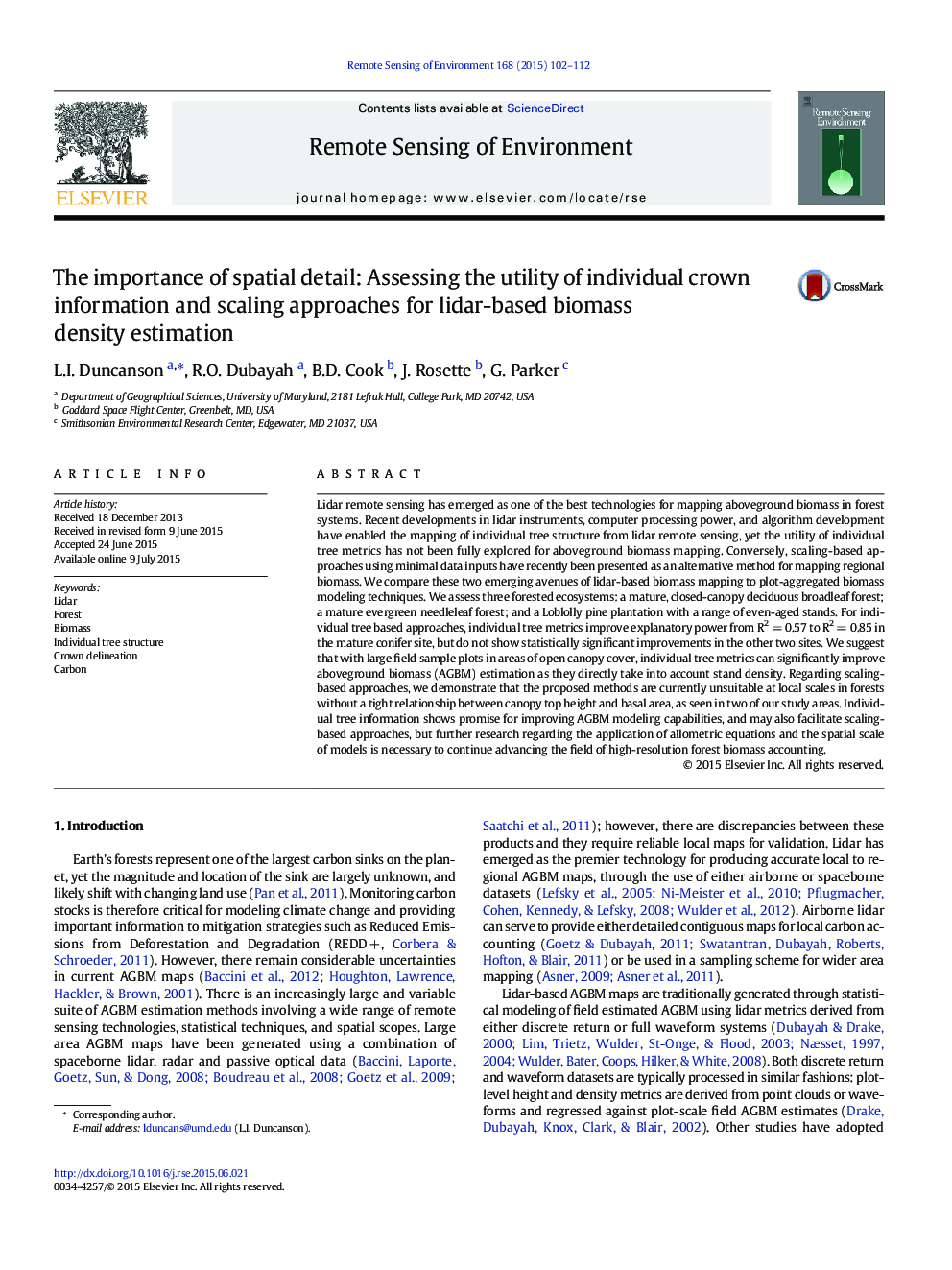| کد مقاله | کد نشریه | سال انتشار | مقاله انگلیسی | نسخه تمام متن |
|---|---|---|---|---|
| 4458809 | 1621232 | 2015 | 11 صفحه PDF | دانلود رایگان |
• We compared different lidar methods for estimating biomass in three forest types.
• Individual tree-based, scaling-based and plot-aggregate approaches were compared.
• Individual tree metrics only improved biomass models at one site.
• Scaling approaches only work if basal area can be estimated from canopy top height.
• Utility of individual tree methods is promising but ecosystem-dependent.
Lidar remote sensing has emerged as one of the best technologies for mapping aboveground biomass in forest systems. Recent developments in lidar instruments, computer processing power, and algorithm development have enabled the mapping of individual tree structure from lidar remote sensing, yet the utility of individual tree metrics has not been fully explored for aboveground biomass mapping. Conversely, scaling-based approaches using minimal data inputs have recently been presented as an alternative method for mapping regional biomass. We compare these two emerging avenues of lidar-based biomass mapping to plot-aggregated biomass modeling techniques. We assess three forested ecosystems: a mature, closed-canopy deciduous broadleaf forest; a mature evergreen needleleaf forest; and a Loblolly pine plantation with a range of even-aged stands. For individual tree based approaches, individual tree metrics improve explanatory power from R2 = 0.57 to R2 = 0.85 in the mature conifer site, but do not show statistically significant improvements in the other two sites. We suggest that with large field sample plots in areas of open canopy cover, individual tree metrics can significantly improve aboveground biomass (AGBM) estimation as they directly take into account stand density. Regarding scaling-based approaches, we demonstrate that the proposed methods are currently unsuitable at local scales in forests without a tight relationship between canopy top height and basal area, as seen in two of our study areas. Individual tree information shows promise for improving AGBM modeling capabilities, and may also facilitate scaling-based approaches, but further research regarding the application of allometric equations and the spatial scale of models is necessary to continue advancing the field of high-resolution forest biomass accounting.
Journal: Remote Sensing of Environment - Volume 168, October 2015, Pages 102–112
